Acrylic Landscape Painting Fundamentals - Complete Course
Complete free course on acrylic landscape painting. Learn simplification, light & shadow, color application, master analysis and advanced techniques.

Welcome to the mothership free course for acrylic landscape painting. Beginning the journey is exciting, but building a solid foundation takes time, patience, and practice. And there’s one lesson about learning that everyone should know…
When I’m not slinging paint in the garage, people are often surprised to learn I used to be a competitive ballroom dancer and instructor. Teaching (and learning) ballroom wasn’t always smooth. One lesson I carried into art is simple: you have to regress in order to progress. That’s learning 101.
IMPORTANT: I HIGHLY recommend you take this course in small chunks, bookmark it, come back, and take on another piece. It's not going anywhere. All lessons are below for each section.
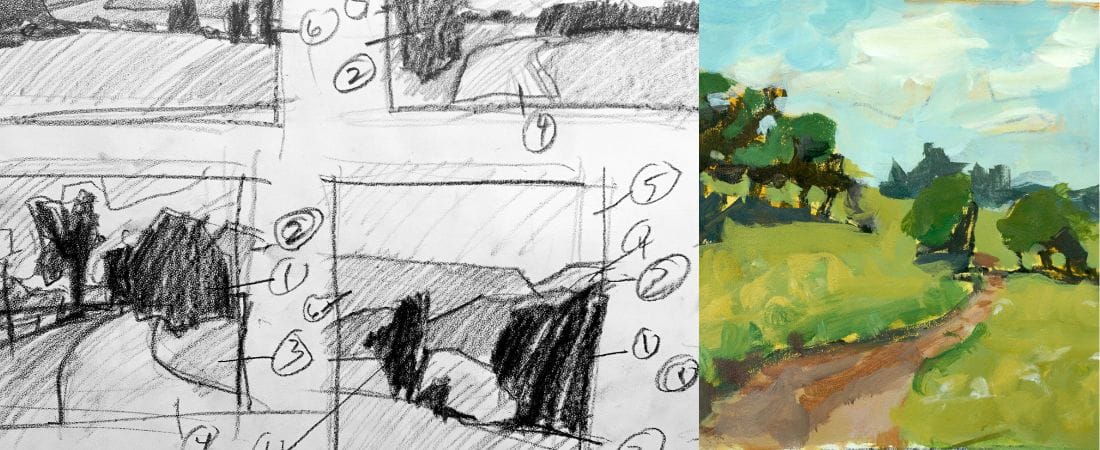
Section 1: Landscape Fundamentals
Master the fundamentals. Everything else builds on this.
Foundation: Masses & Simplification
Abstract Masses 101
Learn the two-shape method and the 6-7 group rule for simplifying any landscape.
Light & Shadow Drawing
Add light and shadow to your masses. Learn how light defines three-dimensional form.
Adding Local Color to Masses
Apply simplified flat color to each mass before adding gradations.
Gradations & Variations
Add depth and atmospheric perspective with subtle gradations without breaking up masses.
Common Mistakes
The #1 mistake that destroys simplified masses and how to avoid it.
Learning from the Masters
Master's Analysis - Isaac Levitan (Grayscale)
Study how Levitan simplified complex landscapes. Map masses over master paintings.
Master's Analysis - Levitan with Color
Add simplified color to your Levitan study while maintaining mass structure.
Apply What You've Learned
Practice Reel Assignment
Practice everything. 5 landscapes, 4 minutes each. Apply simplification under time pressure.
Robert's Practice Reel Part 1
Watch me do the same assignment. See my thinking process, decisions, and shape combinations.
Robert's Practice Reel Part 2
Adding light and shadow with tracing paper. See corrections, enhancements, and creative decisions.
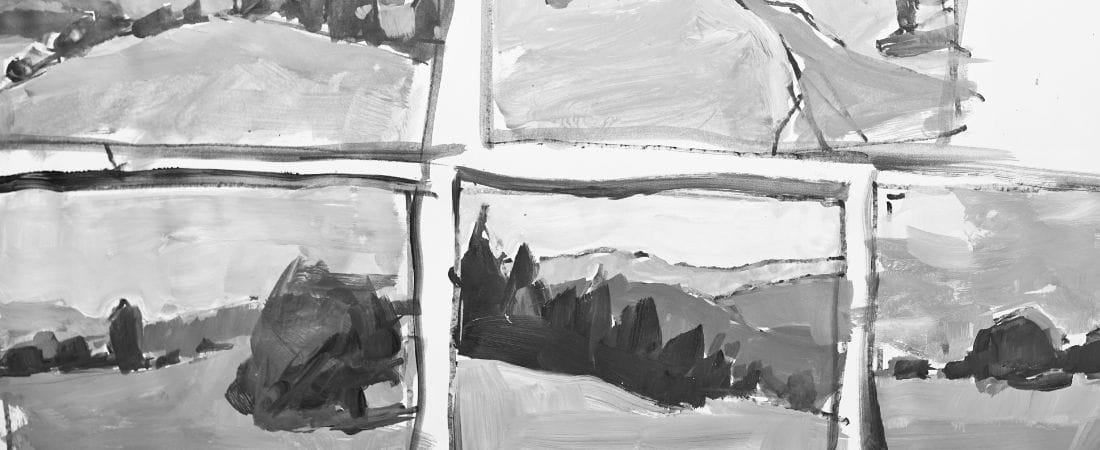
Section 2: Value Hierarchy
In this section, we dive into the backbone of every great landscape painting - value structure. You’ll learn how to organize lights and darks, create convincing light effects, and build form and atmosphere before worrying about color.
Value Hierarchy 101
Learn the core idea of value hierarchy — why every successful painting depends on it and how to start grouping your lights and darks.
Value Hierarchy Demonstration
See a complete demonstration of how to plan, simplify, and organize values across a landscape scene.
Common Mistakes
Avoid the most frequent value traps that flatten your paintings — and learn how to fix them fast.
Low-Key Monet Study
Study how Monet used dark, moody palettes to create unity and mystery.
High-Key Monet Study
Shift gears and explore bright, airy scenes while maintaining strong design.
Practice Assignment
Time to practice — 5 images, 4 minutes each! Work quickly, stay loose, and refine your sense of value hierarchy.
My Results – Practice Reel
Watch my own 5 studies from the assignment and see how I simplify shapes, connect values, and stay organized under pressure.
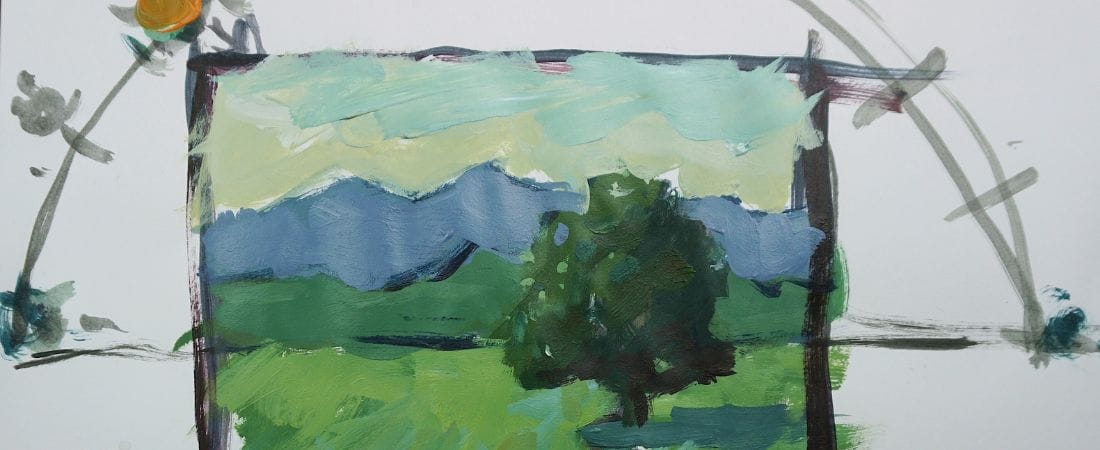
Section 3: Three Planes & Light and Shadow
In this section, we explore how light defines form and how to see landscapes as a collection of planes — flat, vertical, and angled. You’ll learn to recognize how light travels across these planes, how masters designed light and shadow, and how to practice simplifying light direction and value patterns.
Light & Shadow and the Three Common Planes
Understand how light interacts with flat, angled, and vertical planes — the foundation for creating believable form in your landscapes.
Master’s Examples of Planes & Light/Shadow
Study how master painters used plane structure and shadow design to create depth, balance, and atmosphere.
Three Planes & Light/Shadow Assignment
Apply what you’ve learned through quick master studies focused on identifying planes and simplifying light patterns.
Robert’s Three Planes & Light/Shadow Demo
Watch Robert complete the same assignment, analyzing structure, tone, and design choices step by step.
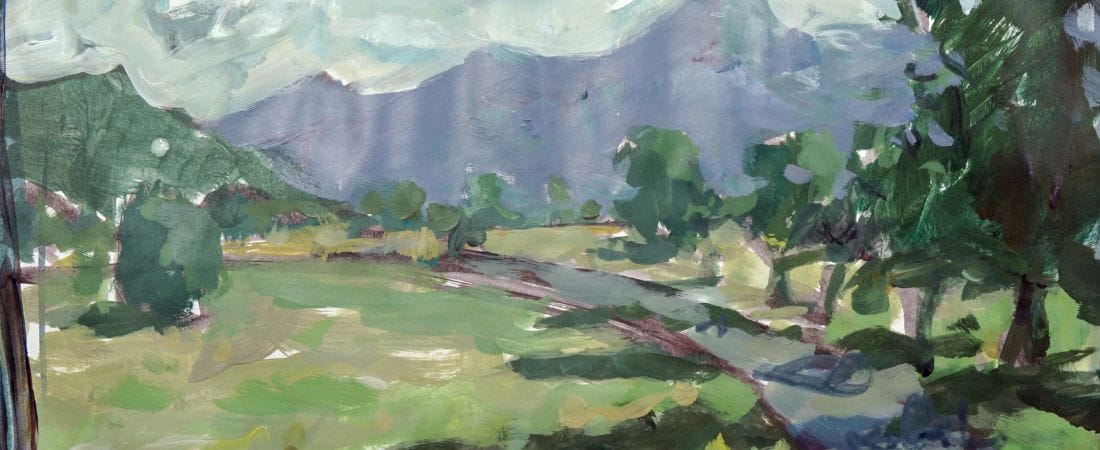
Section 4: Atmospheric Perspective
In this section, we explore how air, light, and color temperature create the illusion of depth in your landscapes. You’ll learn how to control values, edges, and hues to make your paintings feel open, spacious, and believable — just like the masters.
Atmospheric Perspective 101
Understand what atmospheric perspective is and how distance affects value, color, and edges.
Two Color Theories for Atmospheric Perspective
Explore two simple color models — adding blue or reducing yellow — to create realistic depth.
Atmospheric Perspective – Color Demo
Watch me demonstrate how temperature and saturation shifts make a scene feel natural and expansive.
Atmospheric Perspective – Master’s Examples
Study how master painters used edges, color, and value transitions to create believable air and light.
Atmospheric Perspective – Demo Part 1
Follow along as I block in shadows and start building value depth in the first stage of the demo.
Atmospheric Perspective – Demo Part 2
Add light and color temperature shifts to bring warmth and life to the landscape.
Atmospheric Perspective – Demo Part 3
Finish the demo by refining edges, balancing color, and pulling the scene together.
Atmospheric Perspective Assignment
Put it all into practice with a simple color temperature exercise using blue and yellow scales.
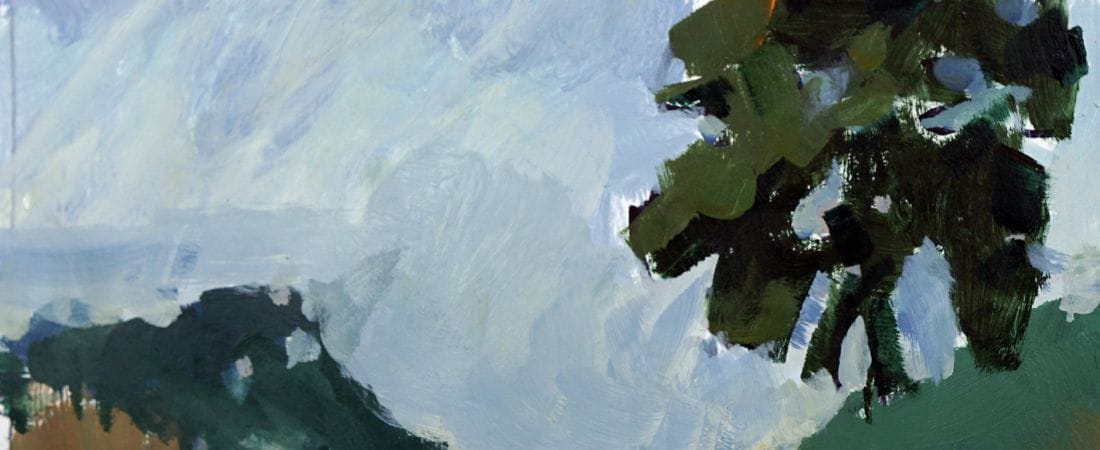
Section 5 – Trees & Sky Holes
In this section, we explore one of the most challenging yet rewarding parts of landscape painting — trees. You’ll learn how to simplify complex tree forms, manage sky holes with confidence, and use refraction and edge variety to make your trees look natural and painterly.
How to Paint Trees & Sky Holes for Beginners Part 1
Learn how to paint trees for beginners by simplifying shapes and masses. Discover how to balance sky holes and light to create strong, believable forms.
How to Paint Trees & Sky Holes for Beginners Part 2
Refine your block-in by adding background color, establishing the ground plane, and adjusting sky holes for realism.
How to Paint Trees & Sky Holes for Beginners Part 3
Understand how refraction affects sky holes, shadows, and edges. Learn how to darken and vary sky holes for a natural, integrated look.
Master’s Analysis – Timkov’s Tree Simplification & Refraction
Study how Isaac Timkov used simplification and refraction to create cohesive tree designs. See how master artists balanced light, color, and edges.
Tree & Sky Hole Painting Assignment
Paint two quick studies focusing on simplification, sky holes, and edge variety. Apply the concepts from this section and build confidence through repetition.
Sky Hole Demo Study – Acrylic Tree Painting
A short acrylic demo showing how to paint trees with believable sky holes and light effects. Learn how to simplify shapes and capture depth fast.
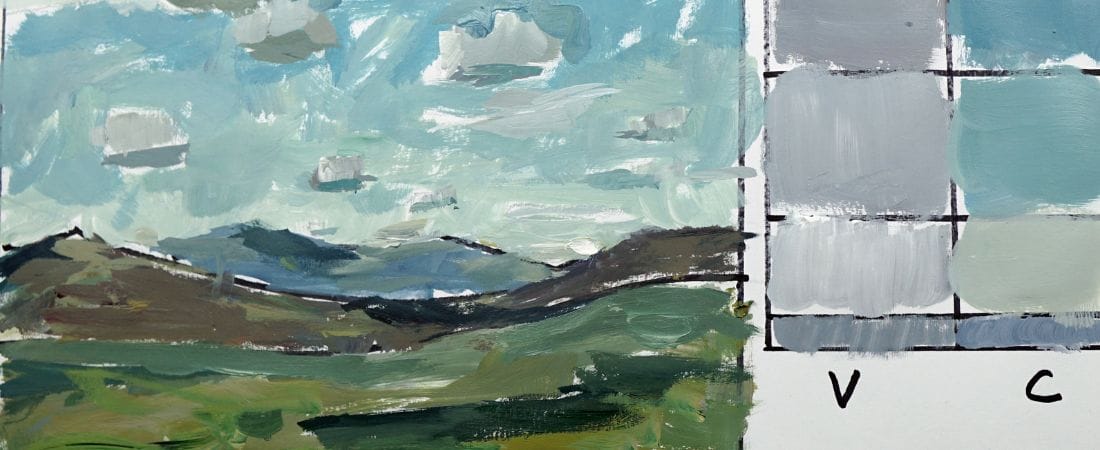
Section 6 - How to Paint Sky and Clouds for Beginners
In this section, we explore how to paint skies and clouds with confidence using acrylics. You’ll learn how to simplify shapes, control values, and add subtle gradations to capture depth and atmosphere. This series will help you create natural, expressive skies that complement your landscapes perfectly.
How to Paint Sky and Clouds - General Model
Learn how to paint clouds and sky using the general model. This lesson focuses on value relationships, color mixing, and atmospheric design.
How to Paint Sky and Clouds - Linear Perspective
Discover easy tips for adding depth and atmosphere to your landscape paintings using linear perspective.
How to Paint Sky and Clouds - Gradations & Cloud Hues
Learn how to paint sky gradations and clouds with acrylics. This lesson covers color transitions, hue shifts, and atmosphere for natural skies.
How to Paint Sky and Clouds - Ground & Mountain Planes
Learn how to paint ground and mountain planes in acrylic. Explore warm and cool color shifts, aerial perspective, and realistic land forms.
How to Paint Sky and Clouds - Refine Ground & Sky Planes
Discover how to refine ground and sky relationships in acrylic painting. Adjust values, color temperature, and reflections for better realism.
How to Paint Clouds - Add Volume & Form
Discover how to paint cumulus clouds in acrylic landscapes. Learn how to simplify form, use light direction, and add realistic color temperature shifts.
How to Paint Clouds - Using Box Shapes
Discover how to refine boxy cloud shapes into natural cumulus forms in acrylic landscapes using soft blending and atmospheric perspective.
Master’s Analysis – Clouds and Atmosphere
Study how master painters simplified skies and used value contrast, color temperature, and edge variety to express mood.
Sky and Cloud Painting Assignment
Apply what you’ve learned by painting two small studies focusing on light direction, gradation, and cloud form.
Teacher's Take on Cloud & Sky Assignment
See the completed version of the Sky and Cloud Assignment. Use this acrylic landscape demo as a visual guide to compare your own painting study.
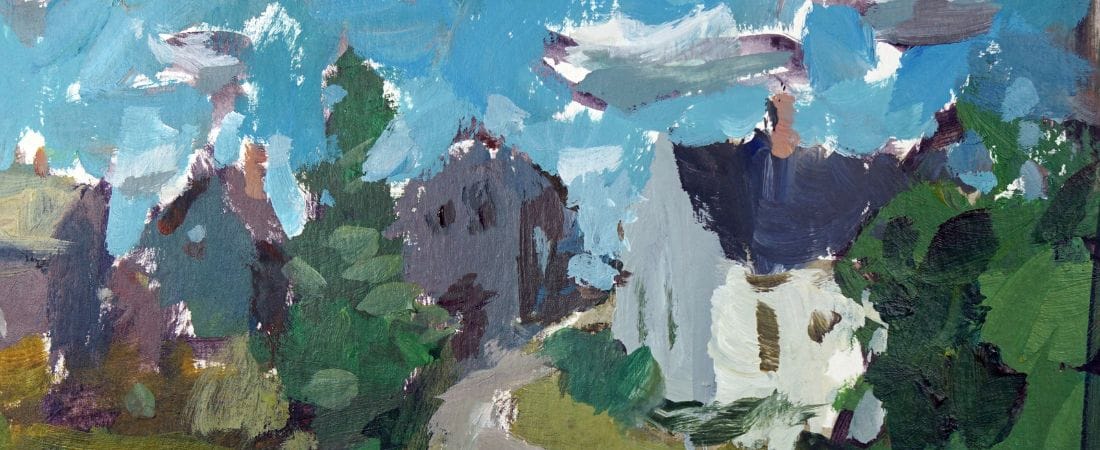
Section 7: Atmospheric Conditions
Explore how light direction and weather influence your landscapes. Learn to paint sunrise, sunset, cloudy skies, and golden hour effects while studying how master painters handled light.
How to Paint Sunrise and Sunset Light Effects in Acrylic
Discover how to capture the beauty of sunrise and sunset in acrylic. Learn to balance warm and cool color transitions and use soft edges to show glowing skies.
Front-Lit Landscape Painting in Acrylic
Learn how to paint front-lit landscapes in acrylic. Find contrast and balance in bright light, and study how even lighting affects edges and value transitions.
How to Paint a Back-Lit Landscape in Acrylic
See how to create glowing edges, cast shadows, and strong silhouettes when painting back-lit conditions in acrylic.
How to Paint Golden Hour Landscapes in Acrylic
Learn to paint golden hour light in acrylic — the rich, glowing tones of sunrise and sunset that make your landscapes pop with atmosphere and depth.
How to Paint Cloudy Day Effects in Acrylic Landscapes
Learn how to capture the quiet beauty of overcast days in acrylics by balancing soft edges, diffused light, and subtle value changes.
Master Painters and the Effects of Light on Landscapes
Study how master painters captured the drama of light — from sunrise to overcast — and apply those lessons to your own acrylic landscapes.
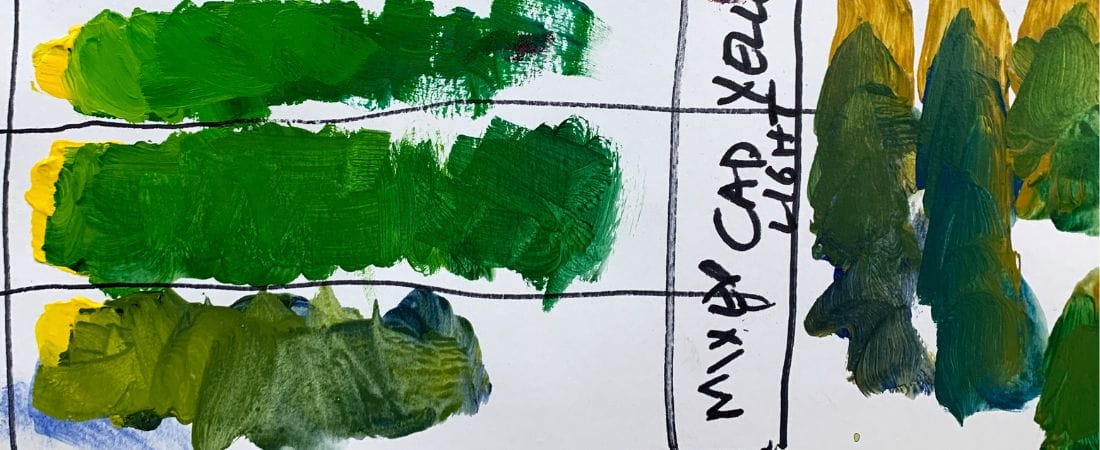
Section 8: Color Mixing & Application Techniques
Explore how color temperature, intensity, and vibration influence the mood and depth of your landscapes. Learn to mix natural hues, control saturation, and create visual energy with confident, painterly color relationships.
Warm and Cool Colors in Landscape Painting
Discover how warm and cool color temperature brings contrast and life to your acrylic landscapes. Learn to balance warm and cool hues for stronger atmosphere.
Understanding Hues Versus Colors in Acrylic Painting
Learn how hue defines a color’s family and why that distinction helps create harmony and consistency across your painting palette.
Understanding Local Color in Landscape Painting
Discover how local color changes under different lighting conditions and how painters interpret it for mood and realism.
Strategic Color Control in Acrylic Landscape Painting
Learn how to stay in control of your palette with this strategic approach to color mixing focused on value, temperature, and saturation.
Mixing Black and Gray in Acrylic Painting
Learn to mix black and gray from scratch using complementary colors. Discover how warm and cool shifts bring life to neutral tones.
Mixing Greens for Landscape Painting in Acrylics
Learn to mix vibrant and natural greens using Phthalo, Viridian, and Ultramarine with Cad Yellow and Yellow Ochre for balanced, realistic tones.
Color Vibrations in Landscape Painting
Discover how color vibration brings life to acrylic landscapes. Learn broken color, layering, and temperature contrasts to create visual energy.
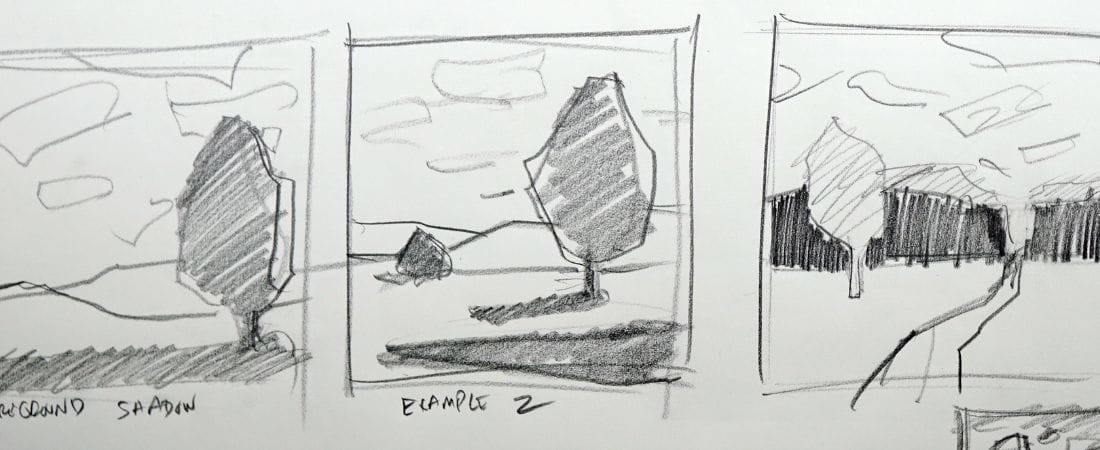
Section 9: Composition & Design Ideas
In this section, learn to design stronger acrylic landscapes by planning compositions, balancing light and dark, and leading the viewer through the scene with clear, simple structures.
Cropping and Format Choices in Landscape Composition
Discover how cropping and format decisions shape the design and storytelling of your landscapes.
Linear vs Mass Composition in Landscape Design
Compare linear flow and value masses to understand how each approach builds structure and rhythm.
Light vs Dark: Balancing Asymmetry in Landscape Design
Design with unequal value groups for stronger, more dynamic compositions.
Leading the Viewer Into the Painting
Use paths, diagonals, shadows, and zigzags to guide the eye into and through the scene.
Landscape Composition Types: L-Shape and Fulcrum Designs
Two reliable structures you can adapt to almost any subject for clear, balanced design.
Avoiding Common Composition Mistakes in Landscape Painting
Fix “kissing” edges, flat spacing, and tracing shapes with simple overlap and spacing adjustments.
Advanced Composition Tips for Landscape Painting
Refine symmetry, spacing, angle variety, and vertical placement for depth and movement.
Master Painters and Composition in Landscape Painting
Study how masters organized large, medium, and small masses with clear value hierarchy and flow.
Landscape Composition Assignment
Apply everything in a two-part assignment: analyze masterworks and design your own compositions.
How to Use This Course
- Start at Lesson 1 - Don't skip around. Each lesson builds on previous concepts.
- Paint along with demos - Pause videos. Do the examples yourself.
- Do the timed assignment - You learn by doing, not just watching.
- Practice outside the course - Find reference photos and apply these methods.
Painting landscapes is a skill you build over time. Be patient with yourself. Focus on structure, not details.
Why This Approach Works
Most landscape tutorials jump straight to details - trees, clouds, grass, water.
That's backwards.
You need to understand masses first. Everything in a landscape exists within a mass. Without that foundation, you're just guessing where things go.
Simplification gives you clarity. The 6-7 group rule forces you to make strong design decisions instead of copying every detail.
Master analysis shows you it works. Levitan understood this stuff. When you map masses over his paintings, you see the invisible architecture underneath.
Ready to start? → Begin with Lesson 1: Abstract Masses 101